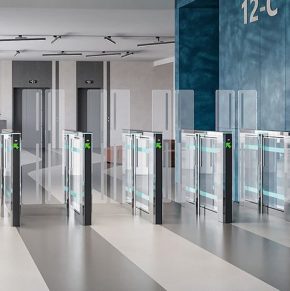
Warnings about deafness and tinnitus caused by excessive noise on building sites
Use the link above to access the complete Johnson Law infographic on Industrial Deafness and Tinnitus
David Johnson from Johnson Law
ñIf a job consistently exposes employees to noise levels of 80dB or more, then they are at risk of developing industrial deafness or tinnitusî.
Although call centres, night clubs, bars and factories are among the loudest places to work, those in the construction industry are particularly susceptible, with tools such hand drills and chainsaws reaching up to 115dB.
If your workforce is consistently exposed to 80dB or more, then they are at risk of developing industrial deafness.
To put 80dB into context, normal conversation measures around 66dB.
Possible effects of exposure to excessive noise
Tinnitus is a common condition that currently affects around 10% of the UK population and is often a result of exposure to noise at work. Tinnitus can be described as hearing a sound, such as ringing or humming, from within the body.
While most people learn to live with tinnitus, it can impacton day-to-day life by affecting concentration, causing sleep problems and can result in depression.
If the cause of tinnitus can be established it can often be effectively treated, however in more extreme cases of audio trauma, hearing can be lost altogether.
The law and you
Legislation is in place to protect employees from this type of injury. If you’re an employer in the building industry it’s a good idea to familiarise yourself with the law.
The Control of Noise at Work Regulations 2005 (Noise Regulations 2005) states that employers must ‘prevent or reduce the risks to health and safety from exposure to noise at work’.
Therefore it is your duty to protect your workforce from acoustic trauma, and this can mean anything from simply providing appropriate ear protection to altering the layout of your workplace to minimise noise levels.
- provide hearing protectors to employees exposed to excessive noise
- ensure hearing protectors are maintained and used correctly
- identify areas where the use of hearing protection is compulsory with visible signage
- Staff should be encouraged to give their ears time to recover if exposure to load noise cannot be avoided. This means 16 hours of quiet if they are exposed to 100dB of noise.
Unfortunately there is no cure for tinnitus, but if you or any of your employees suffer from it, listening to relaxing sounds is often a helpful distraction. Cognitive behavioural therapy can also help in managing symptoms.
Johnson Law,
29-31 Knowsley Street,
Bolton,
United Kingdom,
BL1 2AS
Phone: 0800 130 0699
Fax: 01204 520 777
Visit Supplier's page
Latest news

17th April 2025
Nuaire shares expertise at Specifi Mechanical Services events in 2025
Indoor air quality and ventilation manufacturing specialist Nuaire is pleased to be exhibiting at the Specifi Mechanical Services events once again in 2025.
Posted in Air Conditioning, Articles, Building Industry Events, Building Industry News, Building Products & Structures, Building Services, Exhibitions and Conferences, Facility Management & Building Services, Heating, Ventilation and Air Conditioning - HVAC, Restoration & Refurbishment, Retrofit & Renovation
15th April 2025
West Fraser: CaberDek earns top marks from Home Counties carpentry specialist
A specialist carpentry sub-contractor covering housing sites across a large swathe of the Home Counties has come to value CaberDek from the West Fraser range for a variety of reasons: not least because the high quality panel product doesn’t destroy his operatives’ electric saws!
Posted in Articles, Building Industry News, Building Products & Structures, Building Systems, Case Studies, Restoration & Refurbishment, Retrofit & Renovation, Roofs, Timber Buildings and Timber Products, Wooden products
15th April 2025
GEZE: The Role of Access Control Systems in Enhancing Building Safety
Jane Elvins, Specification and Business Development Manager at GEZE UK, delves into the role of access control systems in enhancing building safety…
Posted in Access Control & Door Entry Systems, Architectural Ironmongery, Articles, Building Industry News, Building Products & Structures, Building Services, Doors, Facility Management & Building Services, Health & Safety, Restoration & Refurbishment, Retrofit & Renovation, Security and Fire Protection
11th April 2025
Don’t Do a Dave! It’s Time to Lock FIT Show 2025 in Your Calendar!
It’s that time again – FIT Show is back! You could be forgiven for thinking there won’t be much new to see when FIT Show returns to the NEC from 29 April – 1 May. Wrong!
Posted in Articles, Building Industry Events, Building Industry News, Building Products & Structures, Building Services, Continuing Professional Development (CPD's), Exhibitions and Conferences, Information Technology, Innovations & New Products, Restoration & Refurbishment, Retrofit & Renovation, Seminars, Training
 Sign up:
Sign up: